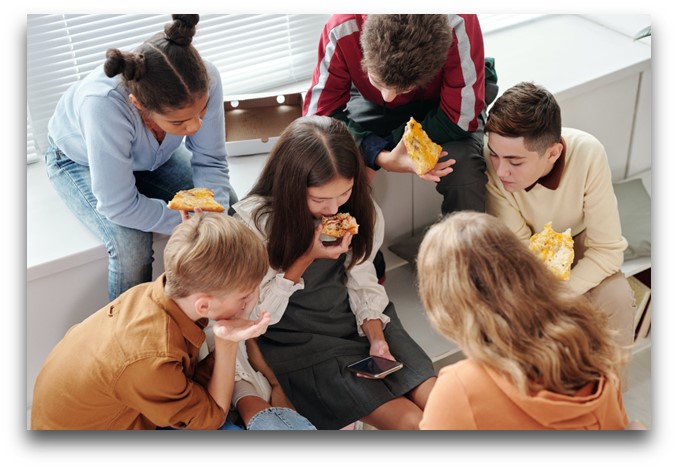Educate to Regenerate
GMO Myths & FactsWelcome to 澳洲彩票幸运5在线开奖计划走势图 澳洲幸运5开奖结果史 手机版查询澳洲幸运五官网现场直播
GMOScience.org is an educational hub for articles, parent advice, videos, and podcasts, focusing on the impacts of genetically modified organisms with a lens on health and the environment.
We provide analyses based on unbiased scientific inquiry, providing solutions-based guidance regarding organic regenerative food for our well-being.
Our goals are:
- To reclaim real science for the benefit of humanity.
- Create solutions for chronic diseases in children and adults.
- Learn the risks of GMOs and the rapidly changing technology and what to do about it.
- Assess and discuss how to live in a world where genetic engineering is unavoidable.
What is a GMO?
GMO stands for “genetically modified organism.” The technology used to genetically modify an organism is referred to as genetic engineering, and an organism that has been modified in this way is called genetically engineered (GE).
The genetic engineering process typically entails isolating DNA (genetic material) from one organism (an animal, plant, virus, or bacteria), inserting it into the DNA of another organism, and ensuring that the traits associated with the inserted genes are expressed in the modified organism.
Crops that have been modified to express new traits via genetic engineering are also called “transgenic.” So far, GE crop plants have been the source of virtually all GMOs for sale as food or food ingredients in US grocery stores. However, a GE animal, the AquaAdvantage salmon, was recently approved by the US Food and Drug Administration (FDA). It is not available in grocery stores at this time.
Are GMOs different from conventional crossbreeding?
Important differences distinguish genetic engineering from conventional breeding. In conventional crop crossbreeding, also called hybridization, two different strains of the same, or closely related, plant species cross-pollinate, thereby sharing their DNA, and this produces offspring that contain genes from each parent.
The mature seeds from the crossed plants are, in turn, planted and grown out. Plant breeders then select the offspring displaying the most desirable combination of traits. Genes from other organisms that are not sexually compatible with the crop, such as animals or bacteria, are not involved.
GMO Crops Grown in the US
2024-2023 查询澳洲幸运的五分钟开奖计划 官网结果查询开奖结果,开奖号码记录,开奖直播, 历史查询, 官方官网, 168澳洲幸运5开奖官网, 开奖走势规律 今日开奖结果查询,澳洲幸运5开奖号码结果 免费下载
%
CORN
%
CANOLA
%
SOY
%
COTTON
%
SUGAR FROM BEETS
澳洲行运五官网结果开奖直播2024
by Michelle Perro, MD
What’s Making Our Children Sick? explores the frightening links between our efforts to create higher-yield, cost-efficient foods and an explosion of childhood morbidity, but it also offers hope and a path to effecting change. The predicament we now face is simple. Agroindustrial “innovation” in a previous era hoped to prevent the ecosystem disaster of DDT predicted in Rachel Carson’s seminal book in 1962, Silent Spring . However, this industrial agriculture movement has created a worse disaster: a toxic environment and, consequently, a toxic food supply. Pesticide use is at an all-time high, despite the fact that biotechnologies aimed to reduce the need for them in the first place. Today these chemicals find their way into our livestock and food crop industries and ultimately onto our plates. Many of these pesticides are the modern day equivalent of DDT. However, scant research exists on the chemical soup of poisons that our children consume on a daily basis. As our food supply environment reels under the pressures of industrialization via agrochemicals, our kids have become the walking evidence of this failed experiment. What’s Making Our Children Sick? exposes our current predicament and offers insight on the medical responses that are available, both to heal our kids and to reverse the compromised health of our food supply.
The New MDS
The recognition that families need guidance from trustworthy, yet authoritative sources, birthed our podcast The New MDS: Mothers, Doctors, and Scientists , featuring GMOScience Advisory Board Members, Zen Honeycutt, GMOScience co-founder and CEO, Michelle Perro, MD, and Dr. Stephanie Seneff respectively, creating a monthly podcast with featured guests on germane topics for parents.
As of 2011, 43% of US children (32 million) had chronic health conditions, increasing to 54.1% when overweight, obesity, or being at risk for developmental delays was included. This data is 13 years old and newer studies indicate that these numbers continue to escalate to shocking levels.
This team of health and science super sleuths investigate common toxic exposures, widespread health disorders, and the medical literature until they’ve identified central factors in what’s making our children sick.
澳洲幸运5历史查询记录_计划直播奥5走势图规律
GMO Science offers educational information on topics ranging from parent advice to scientific studies. Check back regularly to stay informed.
Guest blog: Glyphosate/AMPA and Asthma in Argentina
Note from GMOScience: Chuck Benbrook, PhD in agricultural economics, (https://hygeia-analytics.com/about/who-we-are/) writes about the publication of a recent shocking study from Argentina exposing the explosion of asthma in the Argentinian city of Monte Maiz from...
Resources
Our StoryGMOScience is a scientific educational platform that focuses on the health and environmental impacts of genetically engineered crops and food. We provide analysis based on scientific inquiry and on the study of peer-reviewed publications. We are not...
The State of our Children’s Health
Rhetoric, regulatory capture, and the lack of governmental action have created and fueled one of the greatest crimes of the times which is the allowance and acceptance of the chronic poisoning of our children. Although the root causes of this health-crisis-tsunami...
